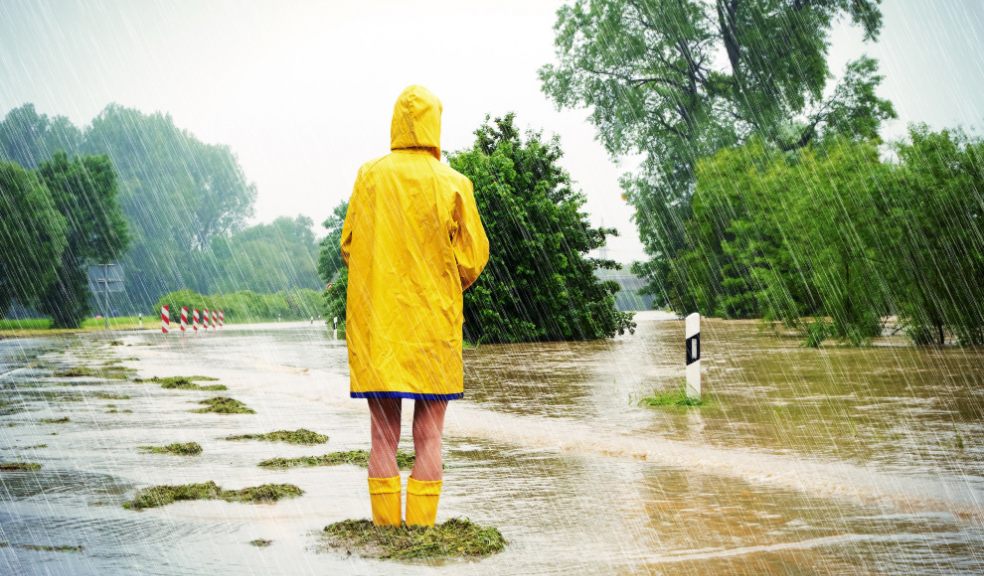
How to stay safe in heavy rain and flooding
Cancel your garden parties and load up on sandbags.
It’s been a funny old summer, to say the least.
Record-setting heat has cooked the European continent, interspersed with cracks of forked lightning flashing across the sky. Now a set of storm warnings bring the latest twist in the tale, predicting torrential rain and possible flooding in some parks of the UK.
Here’s how to stay safe on the roads and in your homes, in anything from a mild drizzle to a flooded front room.
When it rains, it pours…
Ideally, when it’s tipping it down you can sit snugly by the fire with a cup of cocoa, blissfully inoculated against the carnage beyond your windows. You probably won’t always be so lucky, and if you are warned of bad weather it pays to be prepared.
Lock away all outdoor furniture, secure doors and windows, and, if you have to go outside, stay away from trees or buildings that might unload debris. With rain regularly comes wind, and you should also keep away from the roadside and do your utmost not to cycle, as sudden gusts can easily blow you into oncoming traffic.
Try not to get caught far from shelter. If you’re planning a picnic on an exposed and isolated hillside, please remember to check the weather forecast – it sounds obvious, but you’d be amazed.
Driving in the wet
If you can avoid it, do, because driving in a rainstorm comes with its own special dangers.
If travelling at speed, be sure to slow down gradually. Slamming on the breaks can send you spinning at the best of times, and wet conditions drastically increase your chances of a skid. Normal stopping distances may not apply, so leave double the usual space between yourself and the car in front.
In the same vein, drive below the speed limit. Ignore the driver at your back leaning on their horn – this is for their safety as much as yours. Visibility will probably be reduced, so use dipped headlights and keep your windscreen de-misted.
Do not attempt to drive through floodwater. Just 30cm of fast-flowing water (or a third of the way up your tires) is enough to sweep away some cars.
If you can, just stop driving: Pull over, whack on your hazard lights, and wait for the worst to subside. Shelter is good, but trees are not, as in a storm there’s a risk of falling branches. Sturdy bridges and covered car parks are ideal.
Most of all, concentrate. Give vulnerable cyclists or pedestrians more room than usual, respond quickly if jolted by wind, and look out for spray from other vehicles that could obscure your windscreen.
What to do in a flood
The UK government issues three levels of flood warning, which correspond to different degrees of risk and severity.
First, there’s a flood alert – this means flooding is possible, and at-risk properties need to prepare. Fill a bag with key items like insurance documents and medicines, make sure you know how to turn off you gas and electricity, and plan a (hopefully unnecessary) route to safety.
Stage two is an official flood warning. Turn off gas and electricity (though never touch a switch if you’re standing in water), move vehicles to higher ground if safe to do so, and move important items upstairs.
Stage three, and fingers crossed it doesn’t come to this, is a severe flood warning. Make sure you have an emergency kit including a torch and warm clothes, do not enter floodwater, and call 999 if in imminent danger. Follow updates from the emergency services, and evacuate only when told to do so.
For England, warnings are posted on the designated flood information service page. There are separate pages for Wales, Scotland, and Northern Ireland.
The calm after the storm
If your property has been flooded contact your insurance company – or, if you haven’t got insurance, the National Flood Forum. If you’ve been evacuated do not return home without checking with the emergency services, and, if there is one, contact your local flood warden.
Flood waters can contain pretty much anything, so if you’ve come into contact with water wash your hands at the earliest opportunity, and do not drink your tap water if it smells or tastes unusual.
Depending on your situation, you may be able to get financial support from your local council. Take photographs to illustrate damage to your home before doing any cleaning, and make sure to wear gloves. Most repair work will likely need professional expertise.
If you haven’t already, consider ‘flood-proofing’ your home. Simple things like tiled floors and raised electric sockets can help limit damage to your property, while more technical alterations like toilet bungs and non-return valves can stop the water getting in in the first place.













